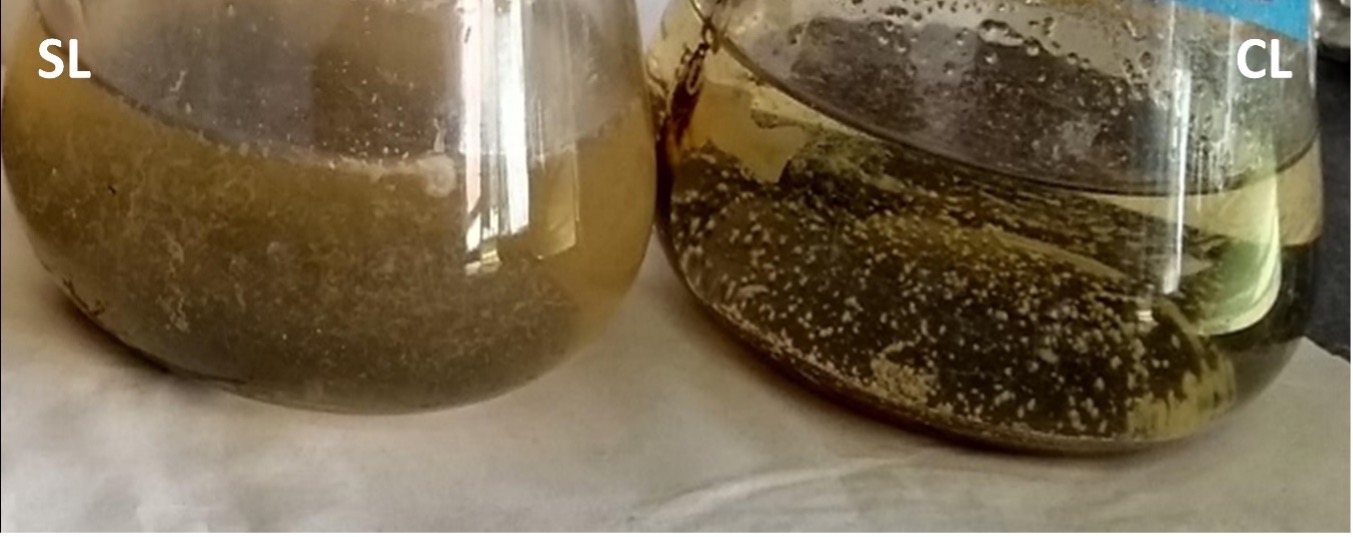 |
|
Bioremediation of hydrocarbon contaminated soils requires releasing the oil from the porous matrix to render it bioavailable. This work aims at evaluating a biosurfactant produced by a Bacillus subtilis strain to improve the release and biodegradation of heavy crude oil contaminating limestone sand. The biosurfactant effect on biodegradation of crude oil was elucidated, using a Rhodococcus sp. strain. The CO2 production rate was used as indicator of biological activity that improved by 32.84%. Moreover, at least 67% of the >C20 fraction was degraded in the systems with biosurfactant, reducing aromatic and resin fractions (12.5% and 2%, respectively), whereas without biosurfactant only 37% of the > C20 fraction was removed compared with the null reduction in aromatics and resin. The decrease in surface and interfacial tension, as well as the modification to wettability caused by biosurfactant activity, were the main mechanisms promoting the release of heavy oil, thus making it bioavailable.
Keywords: biosurfactant, heavy oil release, wettability modification, bioavailability, biodegradation.
|
|
 |

